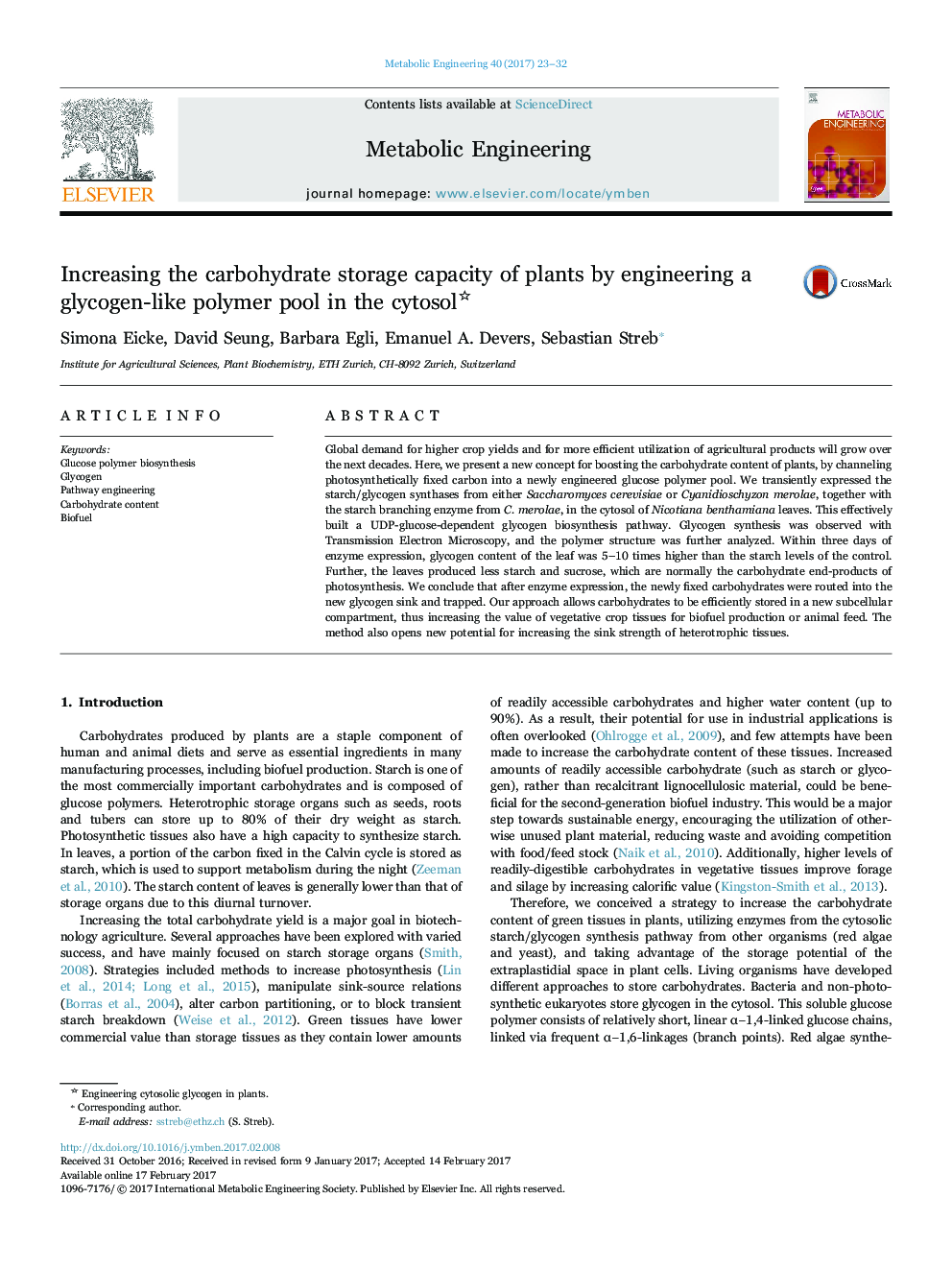| Article ID | Journal | Published Year | Pages | File Type |
|---|---|---|---|---|
| 6452699 | Metabolic Engineering | 2017 | 10 Pages |
â¢The glycogen biosynthesis pathway can be introduced into the cytosol of plant cells.â¢Within 3 days of pathway induction, plants contained elevated levels of carbohydrates.â¢Newly fixed carbohydrates were routed into a new cytosolic glycogen pool and trapped.â¢The glycogen pool is relatively inert against degradation and acts as a carbohydrate sink.
Global demand for higher crop yields and for more efficient utilization of agricultural products will grow over the next decades. Here, we present a new concept for boosting the carbohydrate content of plants, by channeling photosynthetically fixed carbon into a newly engineered glucose polymer pool. We transiently expressed the starch/glycogen synthases from either Saccharomyces cerevisiae or Cyanidioschyzon merolae, together with the starch branching enzyme from C. merolae, in the cytosol of Nicotiana benthamiana leaves. This effectively built a UDP-glucose-dependent glycogen biosynthesis pathway. Glycogen synthesis was observed with Transmission Electron Microscopy, and the polymer structure was further analyzed. Within three days of enzyme expression, glycogen content of the leaf was 5-10 times higher than the starch levels of the control. Further, the leaves produced less starch and sucrose, which are normally the carbohydrate end-products of photosynthesis. We conclude that after enzyme expression, the newly fixed carbohydrates were routed into the new glycogen sink and trapped. Our approach allows carbohydrates to be efficiently stored in a new subcellular compartment, thus increasing the value of vegetative crop tissues for biofuel production or animal feed. The method also opens new potential for increasing the sink strength of heterotrophic tissues.
